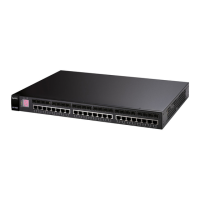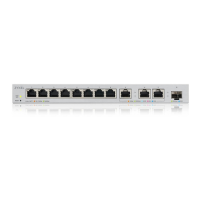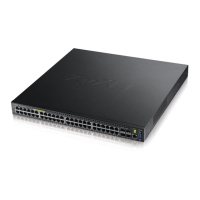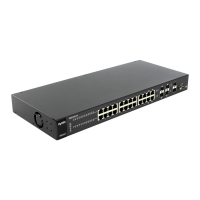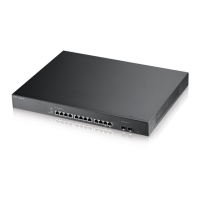Chapter 25 Multicast
XGS4600 Series User’s Guide
259
MLD messages to other upstream ports. This helps especially when you want to have a network that uses
STP to provide backup links between switches and also performs MLD snooping and proxy functions.
MLD snooping-proxy, like MLD proxy, can minimize MLD control messages and allow better network
performance.
In MLD snooping-proxy, if one upstream port is learned through snooping, all other upstream ports on the
same device will be added to the same group. If one upstream port requests to leave a group, all other
upstream ports on the same device will also be removed from the group.
In the following MLD snooping-proxy example, all connected upstream ports (1
– 7) are treated as one
interface. The connection between ports 8 and 9 is blocked by STP to break the loop. If there is one
query from a router (X) or MLD Done or Report message from any upstream port, it will be broadcast to
all connected upstream ports.
MLD Messages
A multicast router or switch periodically sends general queries to MLD hosts to update the multicast
forwarding table. When an MLD host wants to join a multicast group, it sends an MLD Report message
for that address.
An MLD Done message is similar to an IGMP Leave message. When an MLD host wants to leave a
multicast group, it can send a Done message to the router or switch. If the leave mode is not set to
Immediate, the router or switch sends a group-specific query to the port on which the Done message is
received to determine if other devices connected to this port should remain in the group.
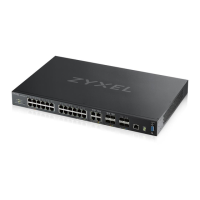
